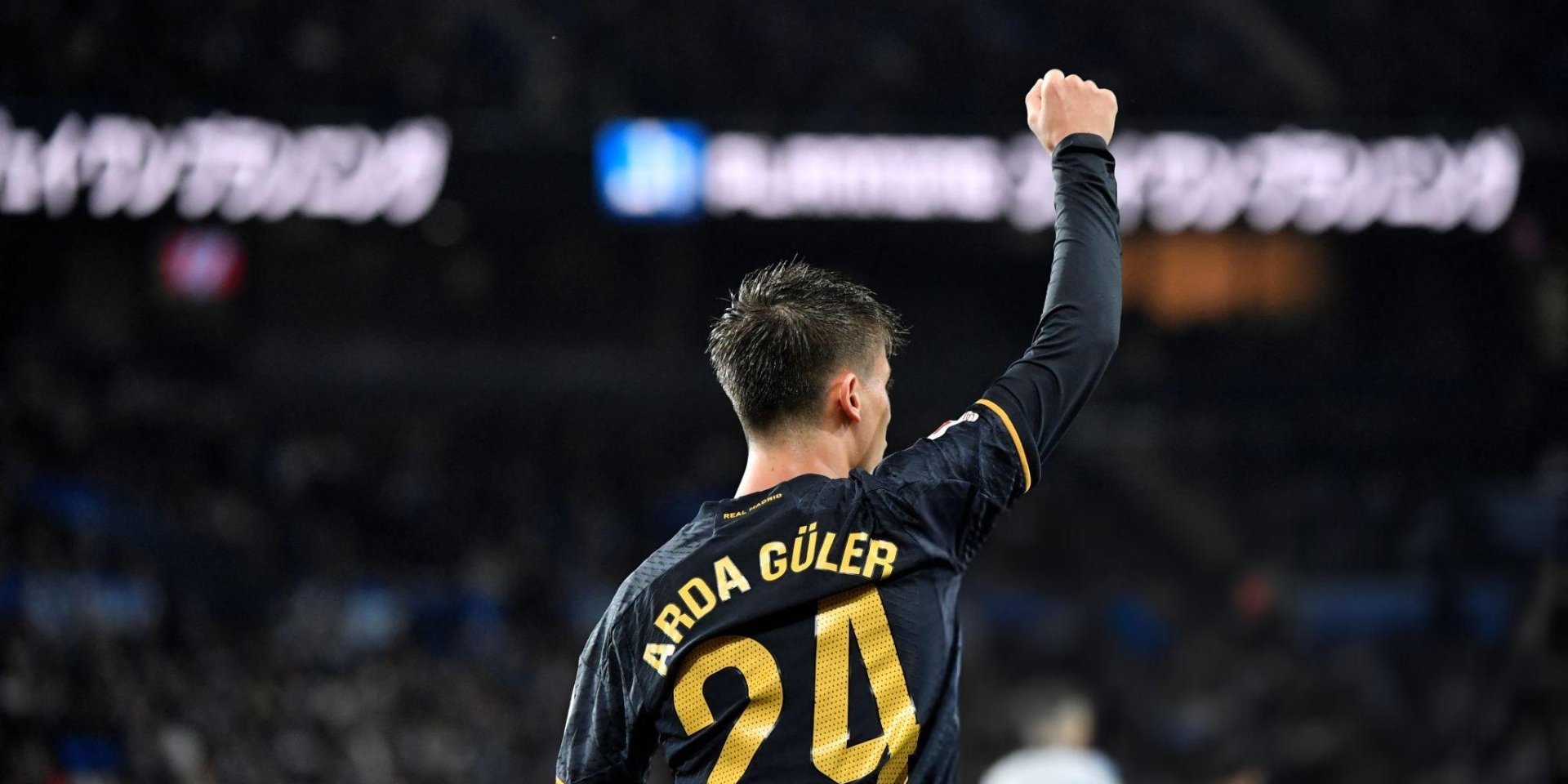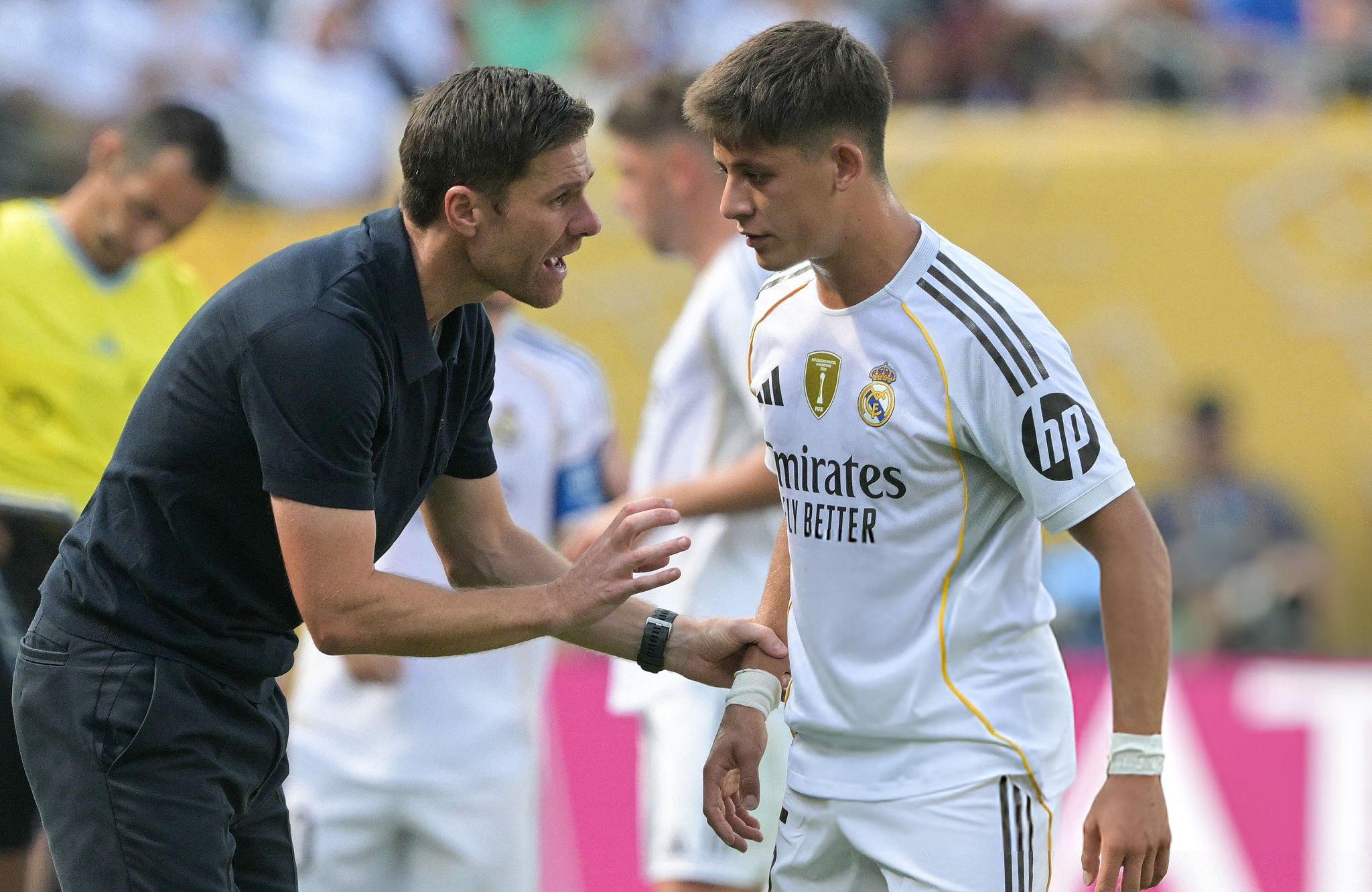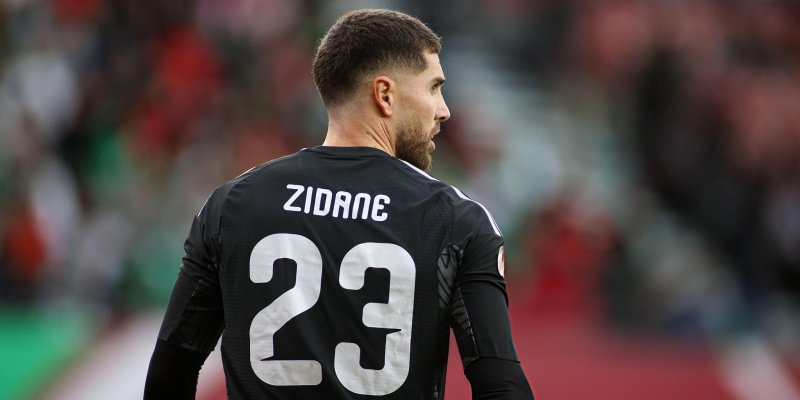
In just a few weeks, Real Madrid’s new head coach has transformed the 19-year-old Turk from a right-flank joker into a genuine conductor of the entire game. Now almost every Los Blancos attack passes through Arda Güler’s boots, while opponents increasingly look bewildered as they try to keep up with the slender youngster’s unpredictable left foot.
Alonso’s Personal Project: Why He Bet on Güler
Immediately after Xabi Alonso’s appointment, several Spanish reporters noticed an intriguing detail: on the way back from the Santiago Bernabéu to the team bus, Alonso walked specifically with Güler—talking at length, illustrating opening angles with hand gestures, even laughing together. For the meticulous Basque, that is a strong signal. According to The Athletic, the Turk makes no secret of his delight: “He explains football to me as if we were sitting at a chessboard.”
The coach has clear rules: Arda must play strictly in the central corridors and touch the ball more often than any other outfield player. Nothing remains of the former “false-winger” role Carlo Ancelotti invented to balance the 4-4-2 shape.
The Team’s Central Pulse: The Turk’s New Position

Alonso’s current Real is a hybrid model. The side starts in 4-3-3 but, thanks to asymmetric full-back pushes, quickly morphs into 3-2-5 or a classic 3-4-3. Regardless of the transformation, Güler stays at the epicenter: he drops between the lines—most often where the “eight” meets the “six”—receiving the ball either from the center-backs or directly from the omnipresent Aurélien Tchouaméni.
Once the ball reaches Arda, the tempo either accelerates or, conversely, slows smoothly—these rhythm changes recall Alonso’s own playing style in his prime.
Line-Breaking Passes: The System’s Signature Weapon
Madrid’s strategy rests on so-called line-breaking passes—sharp verticals that slice through the opponent’s compact blocks.
Last spring that work was handled by Xhaka and Palacios at Bayer Leverkusen, yet Alonso insists the conductor in Madrid will be Güler. Club World Cup stats confirm the choice: for the number of penetrating passes per 90 minutes, Arda already sits in the tournament’s top three, trailing only more seasoned South American playmakers.
Meanwhile, the Turk’s pass accuracy exceeds 90 %, and every second progression ends in a shot—a figure of elite caliber.
Mobility Over Static Play: How Arda Finds Space Under Pressure

If the opponent raises the press, Güler instantly drops deeper—sometimes between the two center-backs, sometimes into the half-space of the right wing-back.
These shifts allow Tchouaméni to stay higher and prepare the counter-press, while offering defenders an easy diagonal that breaks individual pressure.
Thanks to an exquisite first touch, Güler draws opponents in and then sprays the ball to the free flank—exactly the trick Real used to unlock Borussia in the quarter-final, when Arda’s lightning pass to Fran García turned into an assist.
Voice on the Pitch: A Young Playmaker’s Directions and Leadership
Television cameras reveal a curious pattern: the Turk constantly orchestrates not only the ball but also his teammates.
He twirls an index finger, demanding they “hold the corridor,” or waves a palm to show Tchouaméni where best to shift for the return pass.
This was unseen a year ago—an obvious imprint of Alonso, who in his playing days was the team’s walking GPS.
Now the coach literally forces his protégé to “voice” his decisions, raising Real Madrid’s overall football IQ.
Hidden Threat: Late Arrivals and Goal-Scoring Moments
Paradoxically, the closer Güler moved to the pivot zone, the more dangerous his runs into the box became.
Emerging from deep a split second late, he finds defenders already occupied by Vinícius or Bellingham and remains unmarked.
Both of his Club World Cup assists came this way: Arda arrived in the “second wave,” collected the ball without pressure, and delivered either a whipped cross or a delicate chip.
The Turk’s tally of three goal-involvements in five-and-a-half matches may look modest, but considering that finishing isn’t his primary task, the efficiency is striking.
Weak Link? Defensive Skills and Their Cover

Carlo Ancelotti once said, “Arda doesn’t have a destroyer’s DNA.”
Indeed, the young Turk often loses duels and, in positional defense, instinctively lunges at the ball, leaving space behind.
Alonso responds differently: “Mistakes are part of a player’s growth.”
The coach insures his playmaker with two mechanisms. First, Tchouaméni’s stellar form—he reads space like Mascherano alongside Alonso at Liverpool.
Second, periodic switches to a back three; aggressive step-outs by Alaba or Rüdiger cement the pivot zone if Güler gets stuck higher up.
The real stress test is still ahead: so far no opponent has imposed a heavy man-oriented press on the Galácticos in midfield.
What’s Next: Prospects of the Güler–Alonso Duo
For now, the bond between coach and his on-field curator is in a honeymoon phase: the scheme functions, youngsters like García and Arda are growing, and veterans Kroos and Modrić have gracefully accepted reduced roles.
Yet a long La Liga marathon and Champions League knockout rounds lie ahead. Top-tier sides will inevitably test how Güler withstands Manchester City’s or Bayern’s rotational pressing.
The Turk’s response will determine whether he remains a systemic cornerstone or becomes a luxurious, yet situational, trump card.
One thing is already clear: Arda Güler has found a coach who sees far more than a mesmerizing left-wing dribbler in him.
And Xabi Alonso has gained a performer who gives 2010s concepts a truly Madrid twist. If progress continues at this pace, in a few seasons we may speak of a new benchmark regista—with a Turkish passport and a southern smile.








